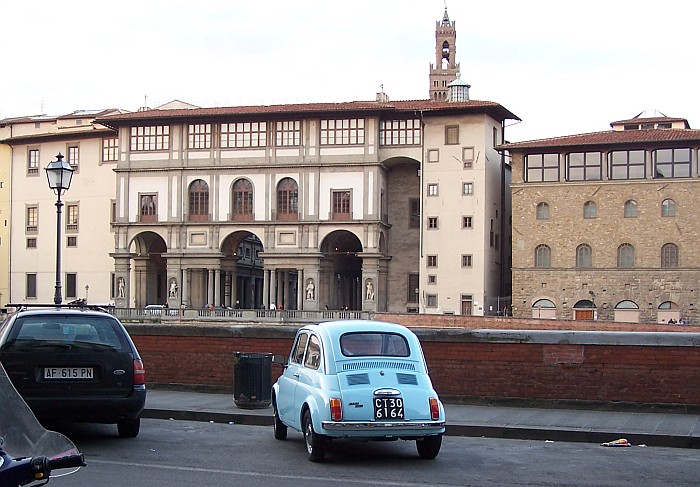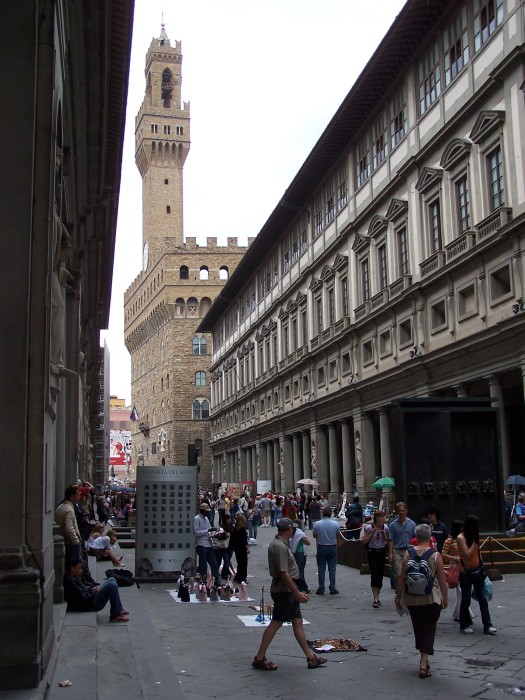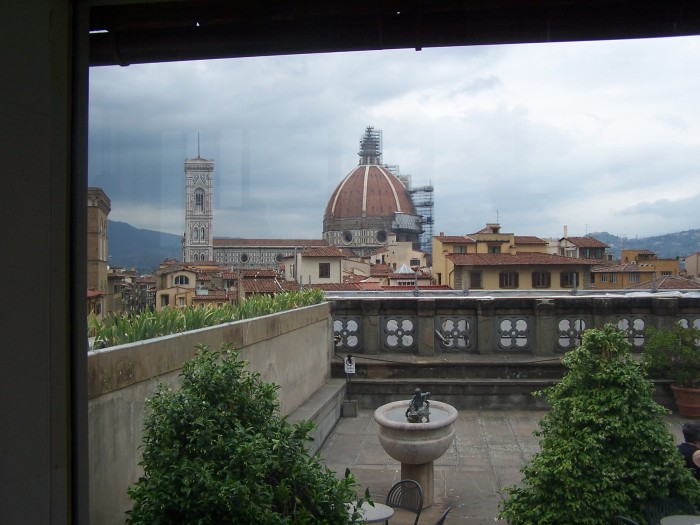(Italian pronunciation: oof-fee-tsee)

View of South side of the Uffizi from across the Arno River

View of South side of the Uffizi from across the Arno River
The Uffizi was commissioned from Giorgio Vasari by the Medicis as administrative and judicial offices. Begun in 1560 and finished twenty years later, the two wings with a loggiato at the bottom are connected by a third wing with arches along the Arno. On either side of the central courtyard powerful piers contain niches with 19th-century statues of illustrious Tuscans, while the upper floors of the building have windows and a running loggia. In addition to the Gallery, which is on the second floor, the building houses the State Archives which contain rare documents from the city's history. On the ground floor remains of the Romanesque church of San Piero Scheraggio with fine frescoes by Andrea del Castagno are seen.
The gallery of the Uffizi is the most famous picture gallery in Italy and one of the best known in the world. It furnishes a complete panorama of the various schools of Florentine painting, represented by important works and authentic masterpieces. It also includes numerous collections of other Italian schools. This great museum did not become public patrimony until 1737, a gift of Anna Maria Ludovica de Medici, the last of the family. The gallery consists of 45 rooms.

view a short movie clip taken in the Piazza del Uffizi (mov. format - 6 mb)

The Adoration of The Magi by Botticelli
Adoration of the Magi; 111 x 134 cm, Uffizi, Florence

Coronation of the Virgin by Botticelli
Coronation of the Virgin, originally San Marco Altarpiece; 379 x 258 cm,
Uffizi, Florence